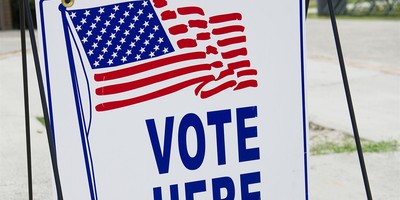Roger Scruton, the public philosopher and conservative commentator, writes in Aeon magazine, a provocative digital magazine of ideas and culture, how fake ideas, fake criticism and fake emotions have come to dominate public conversation and marginalize thoughtful appreciation of beauty, truth and honest debate. His initial concern is about the collusion of critics and artists to fake what's significant and authentic in high culture, but what he says applies to political conversation, too.
The elevation of "faking it" relies on a belief system, as contradictory as this may sound. In art, it's a belief that "what's new" is the only guarantee of quality, requiring a stamp of approval from an illusory expert whose credentials are backed up by those for whom faking it is a shortcut to the hard work of understanding. We once got validation through intellectual tradition, which included religious cohesion, and were graced with great artists and composers, such as Titian, Rembrandt, Bach and Beethoven. We didn't need to know what they believed to believe in what they created. We didn't expect a push of the envelope.
The shock of the new, he writes, brings celebrity and big bucks to an artist, such as Damien Hirst winning acclaim for pickling a shark or a cow and hanging it in a gallery, or composer John Cage sitting on stage in concert dress and never playing a note. This kind of art relies on no standards, for an audience flattering itself for "getting it" without the hard work of examination. The audience is "faking it," too, luxuriating in a fellowship protected from the uninitiated slobs who don't know what's going on and aren't clever enough to pretend they do.
Recommended
Scruton's main point is that elite powers who anoint the so-called artists for stardom aren't even aware they're replacing judgment for attitude. That's the real danger.
This phenomenon extends to politics, too. The assumptions may be different, but the fakery isn't. One striking example is the media reaction to the appointment of Rep. Tim Scott, a black Republican, to fill the South Carolina Senate seat of Jim DeMint, who is retiring.
Scott is an authentic, fresh voice who you might think would please both black and white, a celebration that we've come a long way in dismantling the harsh and unforgiving racial attitudes of the South. We shouldn't have to agree with him on every issue dear to received opinion to appreciate that he earned the appreciation of Nikki Haley, the Indian-American governor who appointed him with pride, and to the general applause of white Carolinians.
But Scott runs against the rigid liberal orthodoxy. The New York Times, the unthinking man's guide to approved liberal prejudices, was predictably outraged, giving prestigious prime op-ed real estate to Adolph L. Reed, political science professor at the University of Pennsylvania, to represent the fakers who howl at any black man being anything but liberal. The professor suspects that the appointment is aimed "at whites who are inclined to vote Republican but don't want to have to think of themselves, or be thought of by others, as racists."
As with the fake scholarship and culture that anoints art and art criticism, the first step is to marginalize the concept of truth. Instead of looking directly at the new senator's character and accomplishments, the professor, who reveals himself to be more political than scientific, plays to prejudice and to the fakers, in this case liberals, who agree with each other and question the integrity of any black man who differs with received orthodoxy. Rather than doing the hard work of examining the man and the issues, the "expert" must find meanings hidden to everyone but the cult of the fakers.
Instead of examining issues, keyboard cowboys and microphone mavens appeal to prejudice little short of bigotry. An op-ed piece by a knee-jerk radical passes for intellectual rigor in the mainstream media. Not many of us care whether the collective fakers in art hang a pickled cow in a museum and call it a contemporary Mona Lisa, but there are consequences for a fake political culture that sacrifices thoughtful argument for mere attitude.
But this is the season for hope, so happy sliding to all, with a wish for a happier new year. We may need it at the bottom a cliff.
























Join the conversation as a VIP Member